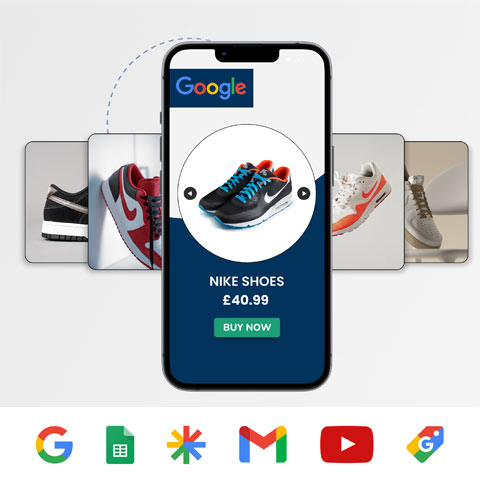5 Transformational Impacts of Integrated Content Management for Retail


We’re used to referring to technological laggards as ‘dinosaurs’ but that term is even more appropriate today. The arrival worldwide of the COVID-19 pandemic was our metaphorical asteroid. It landed among us with almost no warning and, beyond the immediate and devastating effect of the initial impact, it looks certain that it has changed our environment for good. For retail, particularly bricks and mortar, the consequences were dramatic. Literally overnight it was ecommerce or nothing. Like the dinosaurs, retailers were left with two choices – evolution or extinction.
After many months of significant disruption, retailers began to adapt and look to the future. It’s clear that the retail landscape won’t simply return to its pre-pandemic state. Though undoubtedly massively challenging, this particular asteroid has also been the catalyst for business change that has the potential to stand retailers in even better stead in the future. And, fortunately, today we have a few more resources at our fingertips than poor old T-Rex.
ICM - The system at the core of retail transformation
When we talk about the tools that will prove to have been this era’s game-changers, the likes of Zoom and Slack are certainly up there, but they don’t tell the whole story. In a year where there was a mass migration to remote working and distributed workforces, these technologies certainly enabled communication and collaboration for work purposes, but they didn’t actually execute that work. For that, we have to take a deeper look behind the scenes.
It also helps to realize that retail is not just one business, but two. It’s the business of selling things, certainly, but it’s also the business of presenting and promoting the things that are being sold. It’s the business of content. The ability to present products for sale online effectively was vital in a world that flipped almost exclusively to ecommerce, but it’s just as important in physical retail and content will continue to play a huge role in retail’s omnichannel future.
In recent years, the number of channels retailers can use to promote and sell their products has grown and, compounded by the need to move rapidly to ecommerce operations and remote working, many have realized their content management is not up to scratch. This is where ICM (integrated content management) comes into play.
By centralizing, categorizing, and making content available to the right teams at the right time, an integrated content management system (or Universal Content Management as we at censhare call it) is a robust technology that beings a retailer’s digital content, assets and product data into one place and allows them to use it intelligently, speeding up time to market, making cost savings, and delivering a much smoother, more proficient customer experience. Here is a breakdown of five ways in which an integrated content management system supports the modern retail operation.
Agility – by integrating content into a single system, the company can respond quickly to changing circumstances. It is immediately clear what resources it has at its fingertips and teams can access information easily. Workflows are accessible and transparent, meaning decisions can be made quickly and effectively, and work is not duplicated.
Financially prudent – a single content hub has multiple benefits from an ROI perspective. Rationalizing multiple information repositories into a unified resource reduces the demand on tech infrastructure and hosting costs. Not only this, but it is instantly easier to see in a single system where there are duplications or excess information – and where data or content is lacking. Resources are used more intelligently, from staff time to image rights, saving money across the business.
Customer-friendly – consumers demand information in near or actual real time. They are also increasingly being asked to self-serve as companies automate processes and ecommerce plays a bigger role in their lives. Integrated content management makes it easier for retailers to populate their digital platforms with all the information customers need, when they need it. Customers are more satisfied and the pressures on customer service teams reduced.
Future proof – none of us has a crystal ball. Only the most experienced global scientists could have foreseen a pandemic and its potential for wholesale disruption. But if we don’t know what will happen in the future, we know that things change. Consumer needs evolve, trends develop, companies grow and new routes to market emerge. By streamlining their content systems, retailers can be prepared for change and will find it much easier to integrate new technologies and strategies into their existing systems - if those systems are already integrated and optimized of course.
Change is permanent – it is not a case of if retailers should adapt, but when. The push to online has happened and the trend will not reverse. Customers will, of course, need physical retail but its purpose will continue to morph and adapt to their changing needs. The ability to work across omnichannel retail is only going to be even more critical. It is something of an irony that the more complex the retailer’s needs, the greater the imperative for simplified, unified systems to support them.
Want more like this?
Want more like this?
Insight delivered to your inbox
Keep up to date with our free email. Hand picked whitepapers and posts from our blog, as well as exclusive videos and webinar invitations keep our Users one step ahead.
By clicking 'SIGN UP', you agree to our Terms of Use and Privacy Policy


By clicking 'SIGN UP', you agree to our Terms of Use and Privacy Policy
Other content you may be interested in
Categories
Categories

Want more like this?


Want more like this?
Insight delivered to your inbox
Keep up to date with our free email. Hand picked whitepapers and posts from our blog, as well as exclusive videos and webinar invitations keep our Users one step ahead.
By clicking 'SIGN UP', you agree to our Terms of Use and Privacy Policy





![[Research] Apps: The Secret Engine of Ecommerce Growth [Research] Apps: The Secret Engine of Ecommerce Growth](https://images.bizibl.com/sites/default/files/apps-and-web-similarweb-480.jpg)



